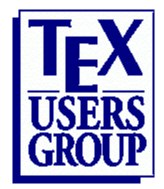


|

|
MacTeX-2024 requires macOS 10.14, 10.15, 11, 12, 13, or 14, Mojave, Catalina, Big Sur, Monterey, Ventura, or Sonoma. It runs natively on both Arm and Intel machines. The same source code is used to compile both types of code, so Apple's Arm and Intel machines are on exactly the same footing. All install packages are developer-signed and notarized by Apple.
Click the link below to download. While downloading, please skim read the rest of the page. Users who run into trouble often write us without noticing that the solution is on this very page.
After downloading, move the file MacTeX.pkg to the desktop or another convenient spot,
and double click it to install. Follow the straightforward instructions. Installation on a recent Macintosh
takes about ten minutes. When installation is complete, go to /Applications/TeX and read the document
READ ME FIRST installed there, which explains how to find and use LaTeX. A copy of this document is available
here.
The installer presents a Welcome page. Then it presents a ReadMe page with more information.
It presents a Software License page, and then a Final Page; clicking the "Install" button on this page will start the actual installation. The final page also has a ''Customize" button, which leads to a panel allowing users to decide which pieces to install: Ghostscript, , the GUI applications, and TeX Live itself. Most users will take the standard installation and ignore "Customize". Users who use MacPorts or HomeBrew may prefer to use the Ghostscript provided by these projects; if so they should use "Customize" to disable Ghostscript installation.
At the end of installation, the installer will report "Success." But sometimes, the installer puts up a dialog saying "Verifying..." and then the install hangs. In all cases known to us, rebooting the Macintosh fixes this problem. After the reboot, install again.
If other problems are reported during installation, skip to the section "Installation Errors" below.
MacTeX writes a symbolic link /Library/TeX/texbin which indirectly points to the TeX Live binary directory. Configure your GUI programs
to use this link. The GUI programs we supply will automatically configure themselves.
MacTeX installs TeX Live, the actual TeX distribution, in /usr/local/texlive/2024. This location is often hidden in the Finder. Typical users access TeX using a "front end", a program providing an editor to enter TeX source and a preview window to view the typeset output. MacTeX installs the front end TeXShop in /Applications/TeX and most people will access TeX using that front end or a similar one.
MacTeX does not overwrite the TeX distribution from the previous year. Users who run into trouble can switch to the previous distribution until the new distribution is fixed. Long ago we installed a Preference Pane which could do this switching, but this functionality is now in TeX Live Utility, which is in /Applications/TeX. To switch, use the Configure menu item "Change Default TeX Live Version."
MacTeX completely configures TeX, so after installation
it is ready to use. Go to "/Applications/TeX/READ ME FIRST.pdf" and read this short document to get started.
X11 is an open source windowing system used by Linux systems. Most Macintosh users can ignore it. An open source version of X11 called XQuartz is available for the Macintosh. It can be found here. If you use X11, you should update to the latest version of XQuartz, 2.8.5. This is particularly important for users with Arm machines. If you installed MacTeX before upgrading XQuartz, just install the Ghostscript piece again.
The TeX Live programs xdvi, pdfopen, and pdfclose require X11. In addition, the Ghostscript library libgs requires X11 (but notice that dvisvgm is the only TeX Live program using it). Ghostscript comes with two binaries, gs-X11 and gs-noX11, where gs-X11 has support for X11 and gs-noX11 does not. When Ghostscript is first installed, a symbolic link named gs is created in /usr/local/bin. If X11 is present, gs points to gs-X11; otherwise it points to gs-noX11. On Arm machines, gs points to gs-X11 only if XQuartz 2.8.0 or higher is present.
If you are having trouble downloading MacTeX, note that the download link
points to a "multiplexer" site which parcels out requests to various up-to-date CTAN mirrors. Occasionally users have trouble getting the package from this multiplexer. In that case, choose a specific mirror on this mirror page.
If you are still unable to download MacTeX-2024 after trying several specific mirrors, and your md5 sum is always incorrect, there is almost nothing we can do to help. The TeX User Group does not run the distribution servers; they are maintained by an entirely separate organization called CTAN. Complaining to us that your download always fails is a waste of time.
MacTeX is a very large package. If your network is noisy, you might want to try downloading
and installing BasicTeX. See Smaller Download.
BasicTeX is very much smaller, and yet has most files, fonts, and programs to process TeX,
so this is a rapid way to get a working TeX. BasicTeX need not be uninstalled before
installing MacTeX, so once you convince yourself that our packages work, you can return to the
main task of installing MacTeX. TUG strongly recommends the full MacTeX for most users, including
beginners,
|
Happy TeXing on macOS ! |
|
Donate |